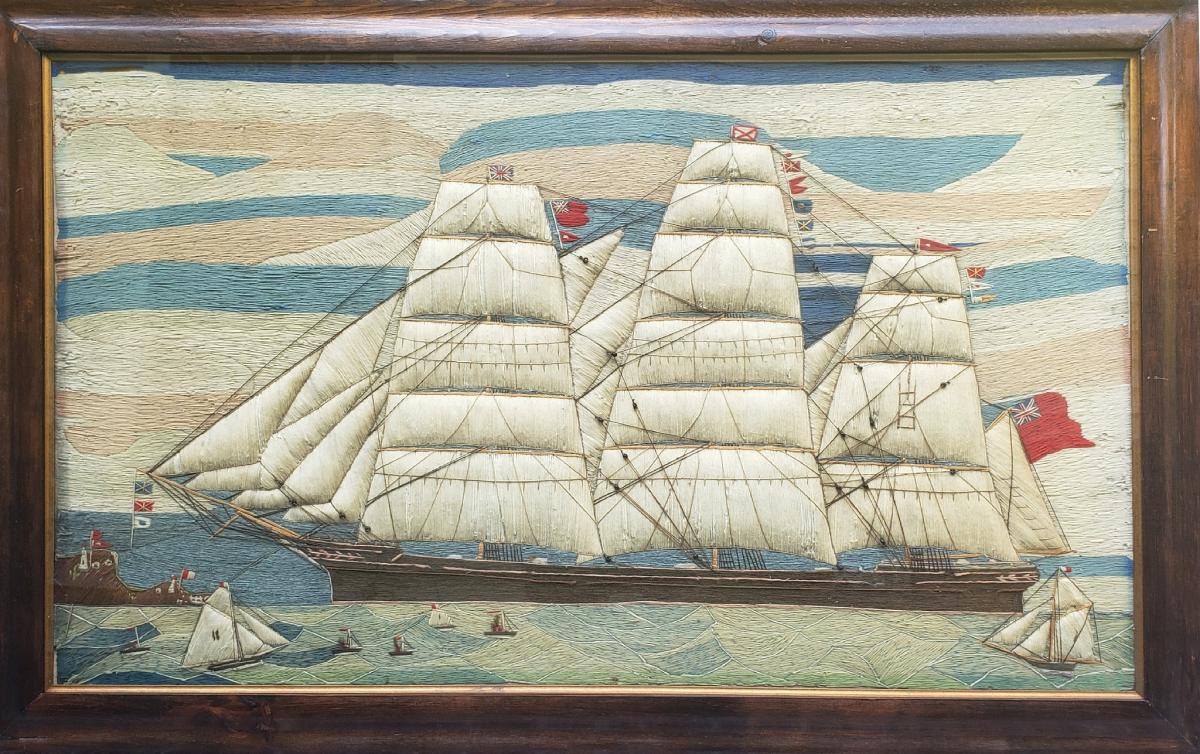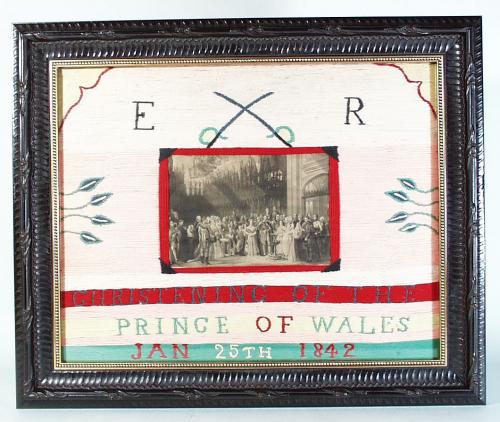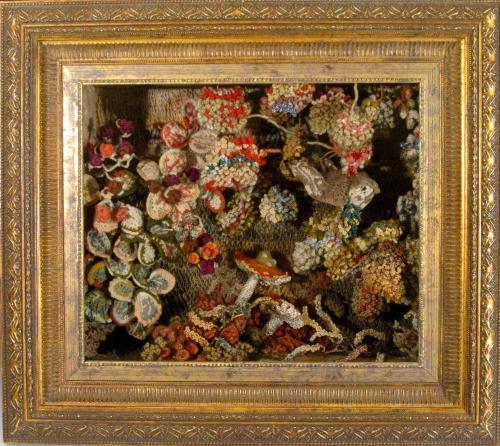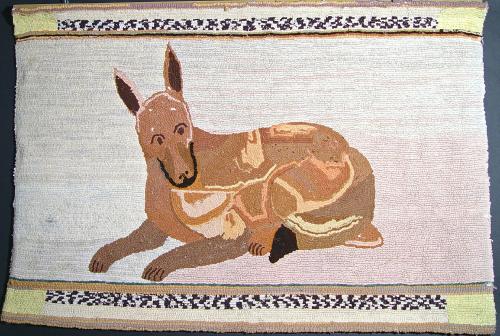

This object is eligible for a Certificate of BADA Provenance
The BADA Standard
- Since 1918, BADA has been the leading association for the antiques and fine art trade
- Members are elected for their knowledge, integrity and quality of stock
- Our clients are protected by BADA’s code of conduct
- Our dealers’ membership is reviewed and renewed annually
- Bada.org is a non-profit site: clients deal directly with members and they pay no hidden fees
Sailor's Woolwork
Large Sailor's Woolwork (Woolie) of a British Merchant Navy Ship Coming into Port
1870
Textile
The massive sailor's woolwork or woolie depicts a fully-rigged three-masted Merchant Navy Clipper passing a signal station coming into port, with each displaying a hoist of Marryat signal flags.
In the foreground pilot cutters can be seen approaching the ship. The sea is depicted in an unusual manner with a series of U-shaped blocks of shades of blue and green.
UV Glass on wool.
Reference::- Maritime flag signalling
(https://en.wikipedia.org/wiki/Maritime_flag_signalling#Marryat's_Code_of_Signals)
Marryat's Code of Signals, Marryat's flags.
Previous systems were primarily naval. The first general system of signalling for merchant vessels was Captain Frederick Marryat's A Code of Signals for the Merchant Service published in 1817.
The Vocabulary
Different flags indicated which list was referred to. As an example, flying the Rendezvous (RE) flag indicating Lighthouses, Ports, etc.) over the numerals 1537 indicates that the ship's home port is Amsterdam.
Flying Rendezvous under the number indicated that the ship is sailing from Amsterdam, and flying it at some other mast-head indicates that she is bound for that port.
Numbers alone indicate a sentence: "4576" means "I mean to keep sail set, and carry on all night, as I am anxious to get into port." Marryat's code was an immediate success and was translated into several other languages, and the 1854 edition was renamed The Universal Code of Signals for the Mercantile Marine of all Nations because of its widespread usage.
The last edition was published in 1879, two decades after the publication of the code that supplanted it. There are reports that it was still being used as late as 1890.
Dimensions
29 1/4 inches high x 46 1/2 inches wideStock number
NY09390The BADA Standard
- Since 1918, BADA has been the leading association for the antiques and fine art trade
- Members are elected for their knowledge, integrity and quality of stock
- Our clients are protected by BADA’s code of conduct
- Our dealers’ membership is reviewed and renewed annually
- Bada.org is a non-profit site: clients deal directly with members and they pay no hidden fees




